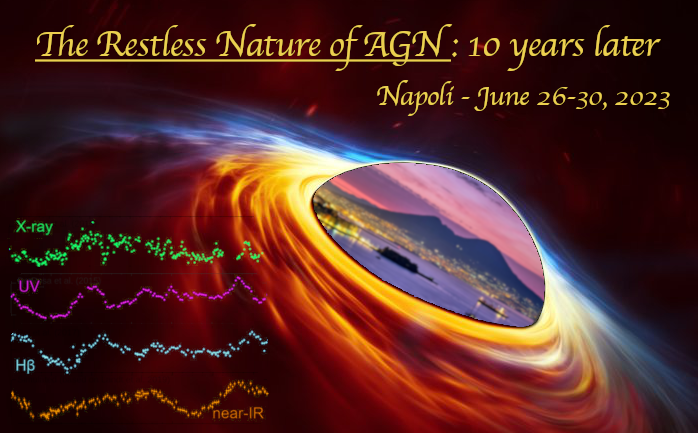Speaker
Description
Serendipitously discovered at the end of 2018 in the nucleus of the galaxy GSN 069, X-ray quasi-periodic eruptions (QPEs) are a new extreme-variability phenomenon associated with supermassive black holes. QPEs typically appear as sharp and intense burst of X-ray emission, with a thermal-like spectrum with a temperature $kT \sim 150$ eV over a much more stable and cooler quiescent level; they last about one hour and repeat quasi-periodically every few hours, carrying a few $10^{42-43}$ erg s$^{-1}$ at each burst. X-ray QPEs have been securely detected in the nuclei of several galaxies since their discovery, all with low-mass supermassive black holes ($M_{BH} < 10^7 M_{\odot}$) and different levels of nuclear activity. In this talk I will review the general properties of QPEs and their variegate phenomenology in the QPE-sources (up to 7) detected so far. I will then discuss the physical scenarios invoked to explain this new and puzzling extreme-variability X-ray phenomenon, as well as the more and more evident physical connection of QPEs with tidal disruption events (TDEs) in low-mass galaxies.

